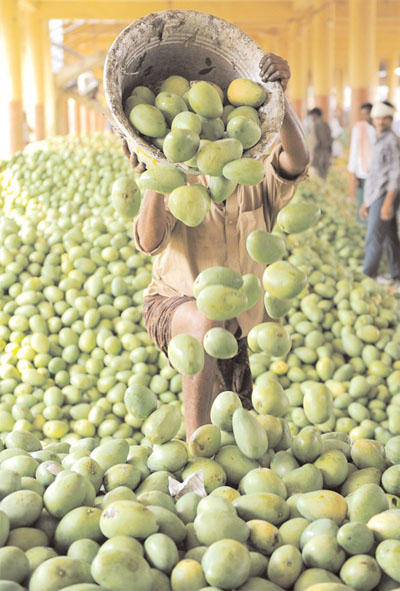WASHINGTON (TIP): Consumers in the United States are finding it difficult to buy Indian mangoes due to the high prices as compared to the ones imported from South American countries, a study has found out. According to a study report released by the US department of agriculture, the rise in the price is attributed to high shipping charges and profit margins kept by traders, and not the costs of meeting US health and food safety requirements for imports, an argument being put forth so far by major mango traders.
In fact Indian mangoes – considered to be the best in the world, costs five to six times higher in the US than the prices of varieties imported from Mexico and Brazil sold at $1 per pound, the study said. “Many attribute the high prices of such products to the costs of meeting US health and food safety requirements for imports,” the report said.
“Despite recent regulatory changes designed to ease access of US imports of certain speciality crops, concerns remain that regulatory and treatment costs inhibit growth of developing country exports,” it added. An analysis carried out by the Economic Research Service – or ERS which is the research wing of the federal agricultural agency — however, finds that in the case of Indian mangoes, “shipping and wholesale markups” are in fact the biggest factor behind the high prices.
Through their research, the ERS broke down the price structure of Indian mangoes which averages $ 4.20 per pound in the US. This includes Indian farm cost (29 cents per pound), irradiation costs (14 cents per pound), inspection costs (35 cents per pound), air freight costs ($1.24 per pound), and US wholesaler costs and margins ($1.88 per pound). “Costs associated with the regulation and treatment of Indian mangoes account for a much smaller share of total costs than air freight or wholesale costs and markups.
Severe reductions in the regulatory and treatment costs associated with Indian mango imports would bring less downward pressure on prices than innovations in shipping or changes in market structure that would reduce markups,” the ERS report said. After several decades the previous Bush Administration allowed import of Indian mangoes with the first shipment arriving in 2006. Persistently high prices of Indian mangoes from 2006 to 2011, however, suggest that some other structural factors kept prices high.
“Irradiation did add to costs, and these costs might be reduced with further regulatory liberalization. But the period was also marked by high shipping costs and high wholesale markups associated with the still small volume of trade,” the report added.
